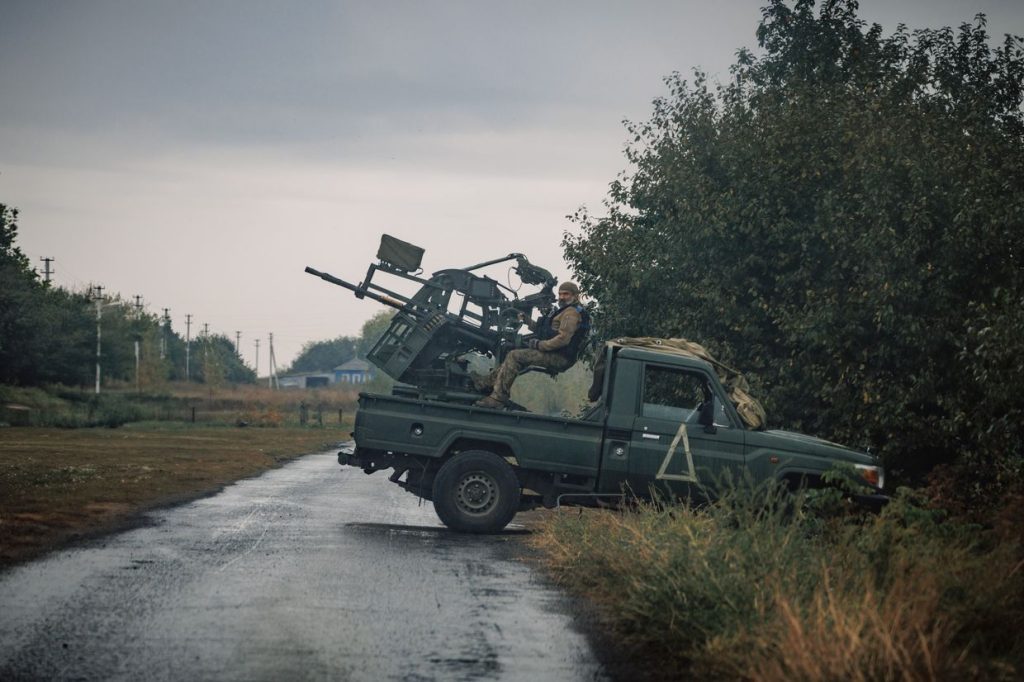Ukraine continues to hold the front line in Russia’s Kursk Oblast despite ongoing attacks by Russian forces, as reported by President Volodymyr Zelensky on October 12. Russian military sources had claimed to recapture nearly two dozen settlements in the area. However, analysts at the Institute for the Study of War noted that Russian forces had likely advanced within at least 13 settlements previously under Ukrainian control. The head of Ukraine’s National Security and Defense Council commented on the ongoing fighting in Kursk Oblast, stating that after Ukrainian troops partially regained positions, Russian forces began to send columns to attack again. This conflict has been ongoing since Ukraine launched a cross-border incursion into Kursk Oblast in early August.
In response to reports of alleged killing of nine Ukrainian soldiers who surrendered as prisoners of war in Kursk Oblast, Ukraine’s Prosecutor General Andriy Kostin announced on October 13 that an investigation had been opened. The killing of prisoners of war is considered a gross violation of international law, and a criminal case has been initiated. The shootings are said to have taken place on October 10, prompting calls from Foreign Minister Andrii Sybiga for the international community to take action against Russian perpetrators. This incident is part of a broader trend of summary executions of Ukrainian prisoners of war by Russian soldiers, with at least 93 cases recorded in the past year.
The illegal use of Starlink internet terminals by Russian forces has been reported as a contributing factor to their territorial gains in Ukraine, including the occupation of Vuhledar in Donetsk Oblast. Despite SpaceX providing Starlink terminals to Ukraine, Russian troops have managed to obtain them through shadowy supply chains, leading to their advantage in the battlefield. Ukrainian soldiers and military officers have noted that the proliferation of Starlink terminals among Russian forces has eroded Ukraine’s previous technological edge. Reports indicate that Russian soldiers are able to control movements, maneuvers, and communications more effectively with the use of Starlink terminals.
Reports indicate that Russian troops in Ukraine have continued to obtain Starlink terminals illegally through shadowy supply chains and intermediaries, despite SpaceX not directly selling units to Russia. The Wall Street Journal reported on this black-market activity, highlighting how Russian forces have access to this technology on the front lines. Ukrainian military officers have noted that the availability of Starlink terminals has enabled Russian forces to improve their communication and coordination, leading to strategic gains. This has posed challenges for Ukrainian forces who previously had a technological edge with their use of Starlink terminals.
President Zelensky revealed that Russia had used around 900 guided aerial bombs against Ukraine in a single week, along with over 40 missiles and 400 combat drones of various types. The use of guided aerial bombs, which are precision munitions launched from aircraft outside of Ukrainian air defense range, has escalated the conflict. Zelensky called on international partners to provide the necessary air defense systems and assistance to Ukraine in order to push back against Russian aggression. Additionally, concerns have been raised about Russia potentially targeting Ukraine’s nuclear power plants, which could further exacerbate the situation as winter approaches.
As Ukraine braces for a difficult winter amid potential Russian strikes targeting its nuclear power infrastructure, the country is facing challenges in maintaining its electricity generation capacity. Russia has already bombed half of Ukraine’s electricity generation sector, raising concerns about the sustainability of power supply during the winter months. While Russia has not directly struck the nuclear power plants, there are fears that they may target them in the future. The ongoing conflict between Ukraine and Russia continues to escalate, with both sides engaged in military maneuvers and attacks that are affecting the civilian population and critical infrastructure.


